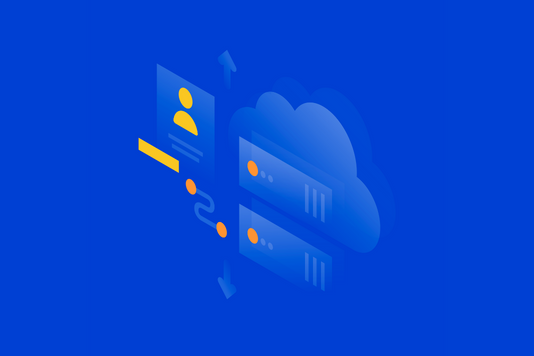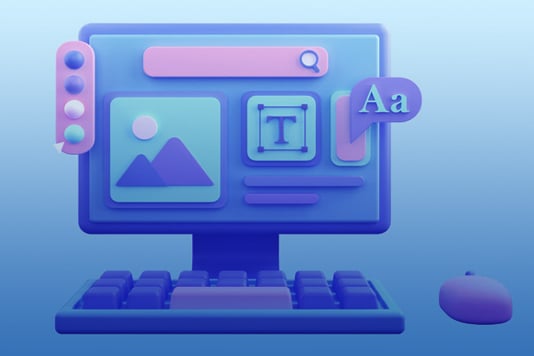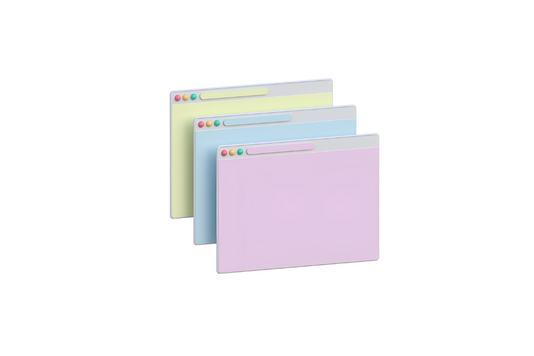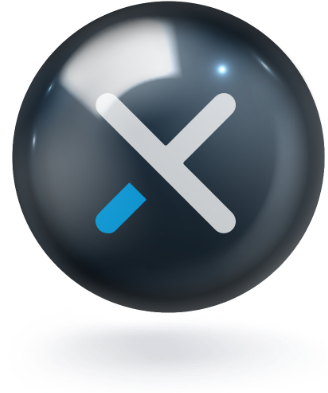Companies have always had to deal with a lot of files. Back in the day, people stored documents in dusty file cabinets placed in cluttered rooms. Now, the amount of digital content a business needs is huge–from brand assets to videos and social media posts. Digital asset management systems have replaced the old-school file cabinets.
Managing all these digital assets would be a risky and daunting endeavor without a dedicated data storage tool.
But what type of data storage tool should you use?
In today’s article, we’ll discuss everything about digital asset management (DAM):
- What is digital asset management?
- Why is it important?
- What are the benefits of a DAM system?
- Who can use one?
- Types of digital asset management platforms
- Comparisons between DAM and other data management systems
Ready?
What Is Digital Asset Management?
Digital asset management (DAM) is the modern version of a library.
It allows you to store, organize, and share media files quickly and easily. A digital asset management system comes in handy for companies that want to organize, create and share pictures, videos, graphics, PDFs, or templates without having extensive coding or design skills. DAM software has the power to store all digital content in one secure location.
Before we go into minute details about digital asset management tools, let’s take a stroll down memory lane. Why were DAM systems developed?
The original digital asset storage tool was the floppy disk. Remember that? But as digital content rose in popularity, floppy disks became inefficient.
And that’s how digital asset management software came to be in the ‘90s.
In 1999, there were 23 blogs online. By 2006, there were 50 million blogs. This spike, along with the debut of social media platforms and smartphones, made the initial DAM solutions obsolete.
That’s when the cloud changed everything.
Fast-forward 16 years. Digital asset management platforms have evolved tremendously. They are now cloud-based, mobile-ready, and open to third-party integrations.
As a marketer in the 1990s, how would you describe this? You might say that it reads like a sci-fi novel.
What Are Examples of Digital Assets?
What are digital assets? They’re any content that organizations can store and share digitally. This includes anything from logos, brochures, templates, images, presentations, documents, or videos. Even memes and NFTs are digital assets.
Truth be told, the sky’s the limit to what a digital asset can be nowadays.
Anything that you can create, organize, and share with those inside and outside your company. Think about all the content and files that are created on a day-to-day basis in your company. All of those are digital assets.
For instance, marketing teams create newsletters, social media posts, blog content, ads, email copies, and so on. The sales teams, on the other hand, create business proposals or product sheets.
Nowadays, every department within an organization manages and shares digital files. Content is everywhere. In such a globalized and connected climate, businesses cannot rely on rooms and file cabinets filled to the brim.
Luckily, a digital asset management system eases the burden of finding, organizing, and sharing digital content.
| PS. With Xara Cloud, you can create visual content without having to pick up a brush. Plus, our smart tool has a data asset management integration, making it easy to collaborate from anywhere in the world. |
How Does DAM Work?
- Brings all your company’s visual assets to one place.
- Organizes and labels all your visual assets.
- Handle usage rights and permissions. Quick onboarding and assignment of roles.
- Distribute assets to anyone on your team: marketers, sales reps, designers, or developers.
- Makes it easy to share materials externally.
- Share quickly on your social media accounts.
Why Use Digital Asset Management?
54% of USA professionals report that they waste time looking for digital content, according to a report from Wakefield. Since hybrid and remote working models are the new normal, this is highly inefficient.
Not to mention that spending half of your working day looking for certain documents is frustrating, and takes the excitement out of your day.
Think about it. How would the world look if physical assets weren’t managed according to a system? It would be mayhem. That’s why there are systems in place, which safely secure physical assets efficiently.
Digital content has to be treated as an asset as well. Unlike physical assets, such as computers or laptops, they don’t degrade with time. The poor handling of digital assets is the source of many issues that businesses are facing.
Who Uses Digital Asset Management?
DAM can assist organizations of all sizes to organize, manage, and safeguard their content and media files. Digital asset management platforms give organizations the infrastructure on which they can build their content management framework.
More so, DAM systems enable many employees to save time, collaborate effectively, and generate more cash flow. This technology offers many advantages to many departments and employees.
Despite this, there are specific positions that rely heavily on it to perform their duties properly.
Digital Asset Management Software for Artists and Creators
The last thing creators want to do is go back and forth looking for files. Data management tools allow graphic designers and visual content creators to store their digital work in a centralized network and streamline their workflows.
With these systems, creators know exactly where to find their logos or Instagram posts– their creative files are all neatly organized in one place! If, say, you’re not sure about how the brand logo is picking up, you can easily collaborate with colleagues and peers. No matter where they are. This speeds up the process tremendously.
More so, artists can share their creative work directly on social media or send them to their clients. All in a click of a button.
With a digital asset management solution, there is more room for creativity and communication. Additionally, some of these tools, like Xara, integrate graphic design and image editing software.
Digital Asset Management Software for Marketing and Sales Teams
Whether you’re part of the marketing department, own a marketing agency or work as a freelancer, you need a sharp management system. Instead of relying on a dozen different tools, why not store and process all data in one location?
Well, with DAM solutions, this is possible. They make it a breeze to keep track of all your marketing assets.
Often, the marketing and the sales team don’t communicate properly. The collaboration between these two teams is essential. This misalignment cuts directly into the bottom line of the business. With a DAM system, the neatly placed brand assets are readily available to both teams. Plus, these two departments can collaborate as they should.
In the absence of easy access to digital assets, the marketing, web, or sales teams might use the wrong ones, damaging your brand reputation.
Digital Asset Management Software for Small Businesses
Your team is constantly producing and using proprietary digital files for marketing, design, website, sales, proposals, and so on.
Without a DAM system, each employee uses a different organization system, often even storing items only locally and making important files inaccessible to the team.
Without a DAM, your team wastes time searching for logos, images, or brand assets. As your library of assets grows, there is more chaos. It’s then impossible to know who has access to what or how they can access certain files.
Why Is Digital Asset Management Indispensable
Consumers and professionals alike deal with an overwhelming amount of information on a daily basis. In a sea of information and digital content, tools organize, remember, and plan for us.
Here are some staggering statistics:
- 51% of marketing professionals report that they waste money and time creating or recreating digital assets that go unused because other members can’t find them
- 46% say that they waste a lot of time moving assets from tool to tool
- 236 hours are lost every year on duplicated work
- 40% of professionals report that they don’t have a single central source for digital assets
And the cherry on top: 50% of participants said they looked up their company’s logo on Google! Yep, you read that right.
Take a look at what challenges companies, teams, and employees face when managing digital content.
#1. Waste of money and time
The development and profitability of your company take a toll when team members are spending most of their time finding assets or moving them from tool to tool. Extra money is spent on recreating content that already exists in one of the many tools you’re using.
This is all avoidable.
#2. Lack of accessibility
Without a DAM, your employees are probably using the wrong assets. Or worse, they end up googling the brand’s assets. New assets created by designers might not reach other teams in time.
#3. Fragmented workforce
When each department or member uses a different management system, mayhem occurs. It’s like everyone speaks a different language. Information gets lost, as do assets, and collaboration dies down.
Not good for business. Or peace of mind, for that matter.
What are the perks of a DAM?
As previously mentioned, using multiple platforms or having no digital content management structure in place leads to chaos and disruption in companies.
But why should you opt for a digital asset management solution? What do they bring to the table?
Let’s unwrap this.
✔ Keep the organization’s digital assets in a centralized network. A single source of truth for all.
✔ Forget all about misplacing digital files.
✔ Anyone on your team can access the media files. Makes it convenient for distributed teams.
✔ Automate workflows. Save time. Increase productivity.
✔ Achieve brand consistency and keep your company’s reputation intact.
✔ Collaborate and communicate seamlessly.
✔ Create content in minutes.
✔ Scale your team or onboard new employees with ease.
Digital Asset Management Systems vs Content Management Systems
Both of these tools were built with digital content in mind, but they each serve a different purpose. Using the word “content” when talking about digital asset management software has created confusion.
Let’s compare these two platforms.
A content management system is defined as “a software that facilitates creating, editing, organizing, and publishing content”, whereas a DAM is “a system for organizing, storing and retrieving rich media and managing digital rights and permissions.”
So, content management systems allow you to publish or edit the content on your website. Think about landing pages, SEO copy, or product images. Plus, with a CMS, you can manage user roles on your website.
A digital asset management solution involves company-wide content. So, not just content that lands on your website, but also business pitches, press releases, or designs for the physical marketing materials you’re about to launch.
In short, DAM platforms let you implement a centralized data storage space, while CMS lets you build and manage a website with no prior coding skills. You can transfer content from your DAM to your CMS in no time.
Digital Asset Management Systems vs Document Management Systems
These systems both aim at increasing productivity and reducing the amount of time spent on searching and distributing digital files. More so, both are cloud-based with tight security protocols in place, to ensure quick access and external sharing, even to distributed teams.
So, how do they differ?
A document management system allows you to store large documents, such as contracts, reports, financial sheets, and so on. It provides audit trailsand helps users manage the entire lifecycle of a document.
While this is a great solution if you manage a lot of documents and reports, it is not as suitable for marketers and visual content creators.
This is where DAM systems come in handy. Digital asset management platforms are oriented more towards visual content and communication.
It’s a hub where you can store all your branding and marketing materials, allowing its users to create and share content within the platform. More so, it can be connected with other digital software in your company, to ensure a smooth operational flow across teams and channels.
Digital Asset Management Platform vs Media Management Platform
The Media Management System (MMS) offers a state-of-the-art solution for media agencies and advertisers.
MMS helps agencies and companies execute media campaigns easily, fast, and cheaper. With these tools, you can set up campaigns, store extensive files for TV and radio, or short-form content. They also allow media agencies to share accounts with their clients, keep track of accounting, or send selective reports to clients.
As you can see, its purpose differs significantly from that of a DAM system, which is more suitable for marketing and sales teams, and for handling company-wide visual content and documents.
Types of Digital Asset Management Platforms
If back in the day, data storage options were scarce, now technology evolves on a daily basis. Martech offers companies a wide range of tools to choose from. So many, in fact, that it can get overwhelming.
Not to worry, after you understand all your options, making a decision becomes a lot easier. Therefore, let’s take a look at the types of DAM systems out there.
Yep, even digital asset management tools come in different flavors. Understanding the capabilities of each system will guide you in your decision.
Remember to take into consideration the biggest challenges your company is facing before making a decision.
Brand Management
A compelling brand identity makes you stand out from your competitors. Your branding should reflect upon the company: its values, unique selling proposition, and trustworthiness on the market.
And for that, you need to achieve brand consistency at scale.
Brand management DAM systems help companies gather, manage, and edit all brand assets, so employees don’t feel compelled to look up logos online. All the brand elements, templates, and logos can be found in one central hub. This way, employees, external partners, or stakeholders can access them with ease.
This type of DAM guarantees that everyone is on the same page. It makes collaboration easy and ensures that branding is consistent.
Marketing Resource Management
What happens behind closed doors within an organization affects everything: from the quality of the products or services to the success of marketing campaigns.
As such, the results of marketing teams are highly dependent on the operational flow. Marketing resource management software ensures that everything works smoothly. It centralizes content, brand assets, and processes. It aligns everyone involved in the marketing process— from designers to marketers.
These tools democratize access to the company’s visual content. So that everyone involved can access, create, and edit. More so, it also helps companies to be consistent in their branding.
Video Management
Video management systems are specifically created with video assets in mind. They simplify the way members access, edit, and share video files.
If you’re a videographer or your company mostly manages videos, this might be the right choice for you. If, however, you handle a variety of digital assets in your company, a digital asset management system is the way to go.
A DAM platform simply allows teams to collaborate on a variety of brand assets, be it documents, brochures, or brand logos.
Efficientize Your Workflow With Xara Cloud
As you’ve seen, there are so many challenges that businesses face when handling digital files and data. Every company has a mountain of files to manage and create.
These days, introducing data by hand or using individual storage tools just doesn’t cut it.
Your company needs smart tools aimed at making digital asset storage an efficient and smooth process. Not only does Xara Cloud allow you to create killer visual content, but it also has a digital asset management system incorporated. This way, all your digital assets are stored in one hub, making it easy to collaborate and grow your business.
Check out our plans and find the right solution for you and your company!
Sign up today for a free trial



 No credit card or phone number required.
No credit card or phone number required.